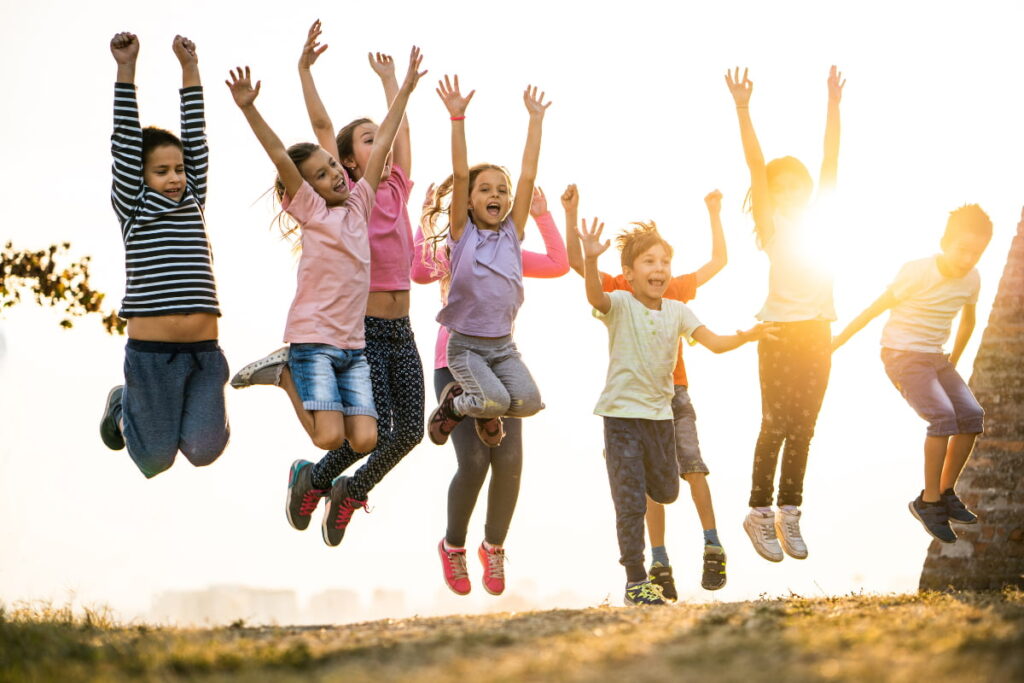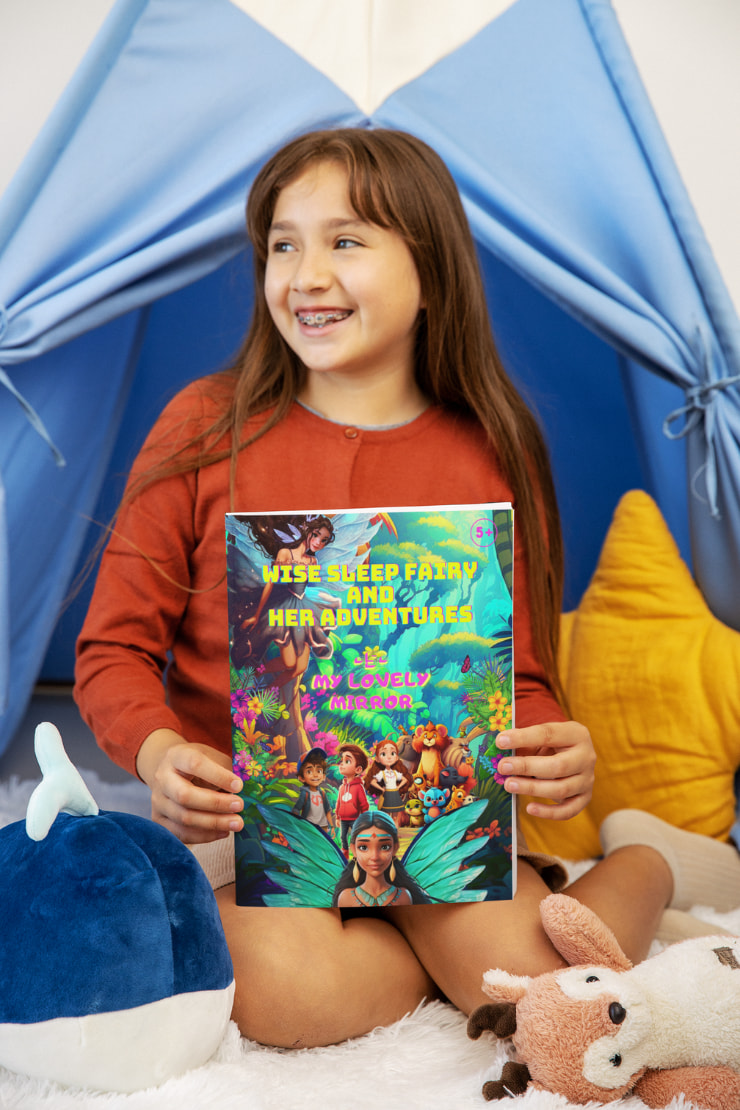In the world where societal standards often shape our perceptions, instilling positive body image in children is more crucial than ever. Beyond the mirror lies a realm where children can cultivate self-love and appreciation for their uniqueness. Body positivity for children involves fostering a mindset that values and respects all body shapes, sizes, and appearances. It encourages kids to appreciate their bodies for what they can do rather than conforming to societal ideals. This approach nurtures a healthy relationship with one’s body from an early age.
As parents navigating the journey of raising children, you always want the best for your little ones. Together, let’s explore the science behind body positivity and empower you with the tools to foster a healthy self-image in your children. Our commitment is not just to share information but to support you in creating an environment where your children can thrive.
Table of Contents
What is body positivity for children?
In the world of parenting, understanding what body positivity means for children is a fundamental step toward nurturing their holistic well-being. Body positivity, in the context of children, is about instilling a mindset that appreciates and values all body shapes, sizes, and appearances. It goes beyond the superficial and emphasizes the importance of cultivating a healthy relationship with one’s body from an early age.
For parents seeking the best for their children, it’s vital to comprehend that body positivity is not a one-size-fits-all concept. It’s about empowering children to embrace their uniqueness, fostering a sense of self-worth beyond societal expectations. Scientifically speaking, numerous studies affirm the positive impact of instilling body positivity in children.
Teaching positive body image involves modeling self-love and acceptance. It means encouraging children to focus on what their bodies can do rather than how they look. Therefore, avoiding language that perpetuates unrealistic beauty standards and encouraging a healthy lifestyle through balanced nutrition and regular physical activity has profound influence on a child’s mental and emotional development.
Nurturing positive body image in children is like planting seeds of self-love, destined to bloom beyond the mirror
Why Body Image is Important to Children
A child’s perception of their body influences various aspects of their lives, including social interactions, academic performance, and mental well-being. Positive body image contributes to better mental health, higher self-esteem, and improved overall life satisfaction. Understanding why positive body image is vital for children involves delving into the profound impact it has on their overall well-being and development:
- Mental Well-being: A positive body image in children is linked to better mental health, reducing the risk of anxiety and depression as they grow.
- Social Confidence: Children with a healthy body image are more likely to engage in social interactions with confidence, fostering positive relationships.
- Academic Performance: Research indicates that children who perceive their bodies positively tend to exhibit improved concentration and academic performance.

Fostering a Healthy Self-Image through Body Positivity
Positive body image is a cornerstone of a healthy self-image. When children learn to love and accept their bodies, they develop a strong foundation for self-esteem and confidence. This resilience helps them navigate the challenges of adolescence and adulthood with a positive outlook. Body positivity isn’t just about appearance; it’s a holistic approach that contributes to the development of resilient, confident individuals.
- Emotional Well-being: Body positivity nurtures emotional resilience, providing a foundation for children to navigate societal pressures with confidence.
- Self-esteem Enhancement: Children exposed to body positivity tend to develop higher self-esteem, fostering a positive sense of self-worth.
- Resilience to Societal Pressures: A healthy body image equips children with the resilience to resist societal beauty standards, promoting authenticity.
- Healthy Lifestyle Habits: Positive body image is associated with a greater likelihood of adopting and maintaining healthy lifestyle habits, including balanced nutrition and regular physical activity.
Beyond the mirror lies a world where children see not just their reflection but the brilliance of their own uniqueness
Promoting Positive Body Image in Children
You play a pivotal role in shaping your children’s body image. To foster a positive self-perception, encourage open conversations about body image, self-worth, and the importance of embracing diversity. Emphasize the uniqueness and strengths of each child, fostering an environment of acceptance. The journey of fostering this positivity involves intentional actions grounded in both scientific insights and practical approaches:

- Open Dialogue: Create a safe space for your child to express feelings about their body, fostering open communication.
- Positive Role Modeling: Demonstrate self-love and acceptance, serving as a positive example for your child to emulate.
- Embrace Diversity: Teach your child to appreciate and celebrate the diversity of body shapes and sizes, emphasizing the beauty of uniqueness.
By adopting these practices, you can actively contribute to shaping a positive body image in your children, fostering an environment where self-love and acceptance flourish.
5 Ways to Develop Positive Body Image in Children Beyond the Mirror
Positive body image in children manifests in various ways. It’s reflected in a child’s confidence, willingness to try new activities, and a healthy relationship with food. Encourage children to celebrate their achievements, both big and small, and focus on the positive aspects of their physical and emotional well-being. Here are five evidence-backed ways to actively develop and nurture a healthy self-perception in your little ones:
- Encourage Self-Expression: Provide opportunities for your child to express themselves through clothing choices and creative outlets, fostering a sense of autonomy.
- Joy in Physical Activities: Observe your child engaging joyfully in physical activities, showcasing a positive connection between their body and well-being.
- Healthy Relationship with Food: Teach the importance of nourishing the body with a balanced diet and witness your child savoring meals without guilt.
- Celebrate Uniqueness: Emphasize that diversity is beautiful, and everyone is unique in their own way. Celebrate and highlight each child’s individual strengths.
- Encourage Positive Self-Talk: Teach your child to replace negative thoughts with positive affirmations, promoting a healthy internal dialogue and self-acceptance.
By integrating these approaches into your daily interactions, you help your children appreciate and love themselves for who they are.
And the greatest tragedy is when you look into a broken mirror to see if you’re pretty, right?
Wise Sleep Fairy and Her Adventures: My Lovely Mirror
In the enchanting children’s book “My Lovely Mirror,” Nana, Dodo, and Yumyum embark on a magical journey guided by the incredible Forest Fairy, Aiyana. Through this heartwarming tale, children learn the importance of cherishing nature and their responsibility in preserving it.
Aiyana teaches the young adventurers that true beauty and strength lie within, emphasizing the significance of self-love and acceptance. The captivating storytelling and illustrations in “My Lovely Mirror” serve as a powerful tool to fostering a positive self image beyond mirror in a fun and relatable manner.
The book encourages children to appreciate and protect nature while embracing their own uniqueness. “My Lovely Mirror” empowers children to recognize their value, fostering positive body image.
Conclusion: Fostering a Positive Body Image for a Lifetime of Confidence
In conclusion, nurturing positive body image in children is a transformative journey that extends far beyond the mirror. You can play a pivotal role in shaping your children’s self-perception by fostering an environment of acceptance, celebrating uniqueness, and promoting a healthy lifestyle. The enchanting narrative of “Wise Sleep Fairy and Her Adventures: My Lovely Mirror” serves as a valuable resource in teaching children the importance of self-love and appreciation for their individual beauty and strength.
As parents, let’s guide our children towards a future where they not only see their reflections positively but also recognize the depth of their uniqueness and potential. Together, we can empower the next generation with the tools they need to navigate the world with confidence, resilience, and a profound sense of self-worth.

